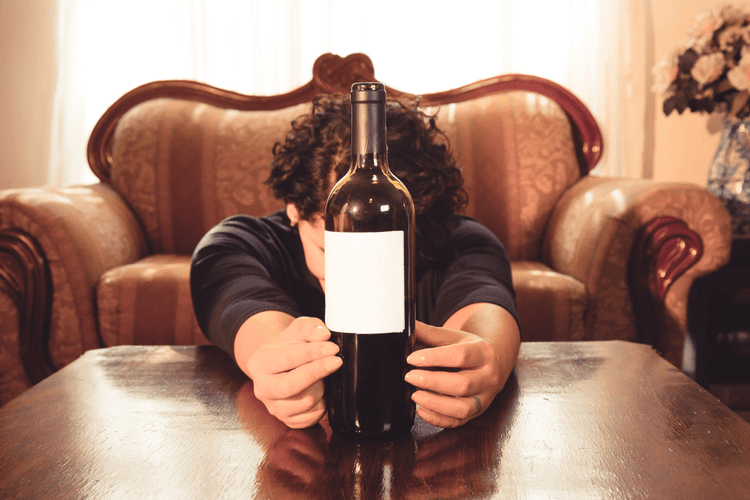This broad category of alcohol consumption comprises a continuum of drinking habits including at-risk drinking, binge drinking, and AUD. Caring for a person who has problems with alcohol can be very stressful. It is important that as you try to help your loved one, you also find a way to take care of yourself. It may help to seek support from others, including friends, family, community, and support groups.

Is alcohol use disorder treatment different for pregnant women and mothers of newborns?

Alcoholism, an informal term used to describe an alcohol use disorder (AUD), can be successfully treated, but using the term “cured” can lead to misunderstanding. Clinical evidence suggests that the most common causes of relapse during this stage are neglecting self-care or not attending self-help groups. During the repair stage, taking care of yourself is paramount. Since withdrawal symptoms tend to ebb and flow, you may be tempted to feel like you’re not making progress ― even though in reality, you’ve come a long way. According to the National Institute on Alcohol https://www.altzone.ru/forums.php?m=posts&q=3929&n=last Abuse and Alcoholism (NIAAA), recovery is a process that involves remission from AUD and quitting heavy drinking for good.
“Isn’t taking medications just trading one addiction for another?”
Your body has acclimated to quitting drinking over the past couple of years. To avoid a relapse at this stage, your mental health is vital. That said, there are four general stages of recovery, as compiled by addiction expert Steven M. Melemis, MD. These stages can help prevent relapse and support people to live healthier, fuller lives. If you drink more alcohol than that, consider cutting back or quitting.
What are the different levels of intensity for AUD treatment?
Intentionally staying https://best-yacht-charters.com/PopularYachts/seadream-ii-cruise involved with addiction recovery support, also known as aftercare, can help minimize relapse. Recovery support could include formal aftercare programs facilitated by professional addiction services, informal relationships built in the community, and much in between. Many rehab centers will set patients up with aftercare as part of discharging them from a program. Treatment professionals help patients navigate aftercare options to find the right fit.
Is there a cure for alcohol use disorder?
This means that when people with the disorder are abstaining from alcohol, they are still at increased risk of resuming unhealthy alcohol consumption, even if years have passed since their last drink. Primary care and mental health providers can provide effective AUD treatment by combining new medications with brief counseling visits. Based on clinical experience, many health care providers believe that support from friends and family members is important in overcoming alcohol problems. But friends and family may feel unsure about how best to provide the support needed. The groups for family and friends listed in the “Resources” https://adamovka.ru/saint/?id=1515 section may be a good starting point. Also known as “alcohol counseling,” behavioral treatments involve working with a health care provider to identify and help change the behaviors that lead to alcohol problems.
NIAAA Treatment Navigator
With chronic use, the body adapts to the presence of alcohol and learns to function in its presence. When alcohol is suddenly removed or reduced, the body must adjust again to its absence, which can result in withdrawal symptoms that may be experienced during detox. In closing, because of the complexity of AUD (and of individuals), no single treatment approach is universally successful or appealing to all patients. The different treatment approaches—behavioral healthcare, medications, and mutual support groups—share similar goals while addressing the varied neurobiological, psychological, and social aspects of AUD. Thus, these approaches are complementary and can work well together in an individualized, flexible, and comprehensive treatment plan.
- It is never easy for family members and friends to talk about a drinking problem.
- Depending on how bad the person’s dependency on alcohol is, these symptoms can range in severity.
- If you’re receiving counseling, ask your provider about handling high-stress situations when you may feel like you need some additional mental health support.
- People often use alcohol to escape problems in their life, psychotherapy will help them address this and give them the coping skills to prevent them doing this in the future.
- Alcohol-related problems—which result from drinking too much, too fast, or too often—are among the most significant public health issues in the United States.
- Motivational enhancement is conducted over a short period of time to build and strengthen motivation to change drinking behavior.
- No cure, however, does not mean there is no hope for long-term recovery.
Setbacks Are Part of the Process

For people who have alcohol use disorder, stopping their drinking is an important first step. This process, however, can bring about the unpleasant and potentially serious symptoms of alcohol withdrawal syndrome. These include increased heart rate, sweating, anxiety, tremors, nausea and vomiting, heart palpitations, and insomnia. In more severe cases, people may also have seizures or hallucinations.
- Preparing and anticipating questions will help you make the most of your appointment time.
- Inpatient alcohol rehab may vary in duration, sometimes consisting of short stays of 3–6 weeks, which may or may not be followed by attendance at an outpatient rehab.
- Some people may think the only way to deal with it is with willpower, as if it’s a problem they have to work through all on their own.
- In closing, because of the complexity of AUD (and of individuals), no single treatment approach is universally successful or appealing to all patients.
It can help someone handle withdrawal symptoms and emotional challenges. Outpatient treatment provides daily support while allowing the person to live at home. In this disorder, people can’t stop drinking, even when drinking affects their health, puts their safety at risk and damages their personal relationships. Studies show most people can reduce how much they drink or stop drinking entirely. Therapists who specialize in addiction can offer one-on-one, couples, family, or group sessions.
Treatment used to be limited to self-help groups such as Alcoholics Anonymous (established in 1935). Now there are a variety of evidence-based treatments, including psychotherapy and medication, to treat alcohol use disorders. The inability to stop or control drinking can throw lives into chaos and do serious harm to relationships and the person’s ability to live a productive, healthy life. When this happens, the individual or family members may hope for an easy way to end the problem through providing treatment that leads to a cure. By classifying alcoholism as a chronic disease, it means that alcoholism is viewed as a progressive, long-lasting illness where there is no cure.
